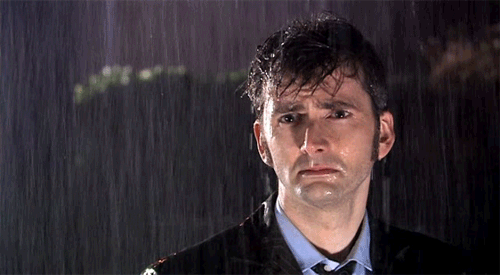Post Event Engagement from the Pros (With Gifs!)
As we become better and better at engaging event attendees leading up to events and while they’re in our clutches during an event, attention is turning to post event engagement. That time after your event where attendees are still experiencing all of the warm fuzzies is critical to fostering community and repeat attendees. Gone are the days when you could take a breath afterwards and cruise for a couple months!
Here’s the relieving secret though – post event engagement doesn’t have to be hard or a huge time commitment. It’s basically your normal communication strategy with a little bit of extra love thrown in during the days and weeks following the event. Post event engagement will actually make your life easier throughout the year because your event’s content informs what you will talk about for the next 11 months. All you have to do is set yourself up for success beforehand.
Your event’s content informs what you will talk about for the next 11 months.
Here are 3 types of post event engagement and how you can get a jump start on making your attendees into a year-round community.
Change your tone and say “thank you”

Give thanks. Not that your event is over. Well, you can do that too – but then give thanks to your attendees for coming. Sending out thank you’s is part of a larger shift in tone that will occur in your yearly event communication cycle. Eric Tung, a social media strategy consultant, says, “The message changes from a sales-driven, ‘register-now’ mentality to one that’s almost nostalgic.”
Getting people to develop fond memories of your event consists of two elements – attach something concrete and then attach a feeling to it. For the concrete element, call out something specific that happened. It might be a session, a place or a shared experience. That’s the basis. Now give it a value. Was it fun/funny/poignant/surprising? Think of it as an inside joke between you and your attendees. Tweeting out “Still laughing about Sam’s gifs in his slide deck,” will do wonders for attendee good will.
When you’ve mastered your post event engagement tone – you must send a thank you email. It’s pretty much a non-negotiable. Ruby Sohi, co-founder of Royal Blue Events and Communications, agrees. “Post event thank you notes can go a long way. I like to encourage my clients to also leverage social media networks to say thanks, particularly to event sponsors. Its a great way of keeping the conversation going after the event and also exposes your followers to the amazing sponsors that helped create their experience.”
Beyond just giving one last shout out to your sponsors, consider trying to capture a future audience with your thank you’s. Ruby says, “Consider asking attendees to invite a friend to a future event and reward them with discounts and special offerings or exclusive prize draw entries at future events.” If you’re not quite ready to sell tickets or accept early registrations – that’s understandable, but definitely give your past attendees a chance to raise their hand for information about the next event with bonuses for referrals.
Develop a post event engagement trickle

Or a post event engagement downpour.
You’ve spent a lot of time seeking out great content for your event, so don’t let it all die once the event is over. If you play your cards right, content from your event can populate your post event engagement for a good long while. This (a) gives you something to talk about and (b) continues to reinforce fond memories about the event.
You’ve spent a lot of time seeking out great content for your event, so don’t let it all die once the event is over.

Eric Tung offers, “The key to attendee engagement is to capture notable ‘sound bites’ for distribution across social, and trickling them back out over time. Create quote-graphics, infographics and other content to both remind former attendees of the learning opportunities at your event, as well as to entice others to attend.”
All of these ‘sound bites’ are up for distribution, and there is a channel for every kind. “You can use various tools to house the content for distribution – Slideshare for slide decks, YouTube for videos, SoundCloud for audio files, and others like Buffer and SproutSocial to help coordinate your social media posts,” says Eric.
Ruby suggests thinking of ways that you can engage people in activities during the event that wrap up afterwards. “A great example might be a crazy photo contest that requires attendees to strike their best pose in a designated area at the event, all photos are then uploaded to Facebook and a winner is announced and rewarded with a prize. This encourages new followers, photo sharing as well as post event hype.”
Engage people in activities during your event that wrap up afterwards.
This strategy can apply to actual presentations as well. “Moderators and speakers can create components for live polling, discussion capture and event feedback that continue at their discretion,” says Karen Shackman of Shackman Associates in New York. When a presenter uses mobile tech to create a discussion in the room, it has great potential for extending beyond those four walls.
You should also share the results of your feedback survey with your attendees. “Are you sure that’s a good idea?” you say. “Stick with me here,” I say. By sharing your feedback results, you create an entirely new meta conversation around your event. Your attendees know exactly what went well and what you plan to improve. This added layer of transparency creates brand trust and will keep them coming back to future events to see how you grow and evolve.
Take time for community building

By hosting an event you have the unique advantage of creating a de facto community around it. Humans can’t help but assign meaning to shared experiences – and you’ve spent a lot of time orchestrating an elaborate shared experience. Strong communities stick together, so the only logical conclusion is making a strong community out of your attendees with your post event engagement.
By hosting an event you have the unique advantage of creating a de facto community around it.
Karen Shackman sees mobile apps as an entry point for community building. She says apps that allow attendees to connect within them and make use of geofencing to do so “create a mobile city within a city that is like one big business opportunity waiting to happen. And when it does, the apps convert new connections into a platform that keeps relationships and discussions alive long after attendees have boarded planes for home.”
You might also consider marketing similar events to your attendees. Partnering with other events that may be of interest to your attendees serves a dual purpose. It keeps your community talking about, and engaging with, the subjects you care about. It also opens you up to widening your community by attracting those other events’ attendees as well. A little cross-pollination never hurt anyone.
Post event engagement is not an optional part of your communication plan. Keep it in mind as you’re experiencing your own event, and remember that the content you’re generating now will continue to sustain you until the next event. And at the end of the day it all comes down to continuing to give your attendees quality content.
In the words of Eric Tung, “Provide information that helps them do what they want to do better. Continue providing interviews or guest blog posts from speakers, and it will be almost natural for your attendee to re-register.”


